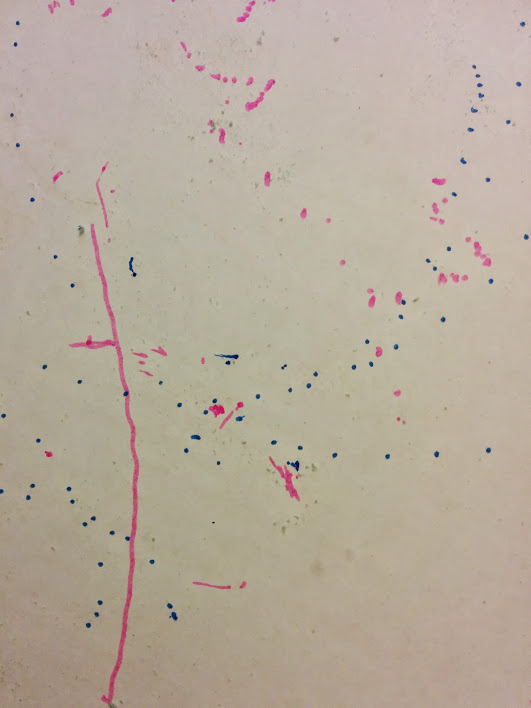During a Pinterest binge last week, I came across an interesting activity for teaching multiplication and skip-counting on KidsActivityBlog. The patterns created by connecting numbers across the circles really caught my eye and I figured my six year old would be interested too.
However, it's terrifically difficult to get him interested in worksheets, I wasn't sure that I could manage the activity outside (or that the weather would cooperate), and I always love to come up with ways to do something reusable. After a few moments of brainstorming, I thought of our Geo Board, currently languishing in the attic since I'd gotten tired of tripping over it on my son's bedroom floor some months before.
Of course, I did not want a square: I wanted a circle! More specifically, a circle with exactly 10 evenly spaced pegs around its circumference. This is not something you can achieve with a pure grid pattern - at least not at a size still useful for the rubber bands we own. Besides, the pegs not in use would be in the way.
Thankfully, while our original board was made with dowels glued into the holes, I'd updated it some time ago with nuts and bolts, which have the bug/feature of being removable. It took a little experimentation, but I finally figured out which bolts to move and which to remove entirely.
I didn't really want to write on my board, so I stuck some masking tape near each bolt and wrote on it. Since we're also working on the concept of even and odd, I made the even numbers red and the odd ones blue. Check out the photos below for the peg layout.
This pattern is formed when counting by 4
This pattern is formed when counting by 3
This pattern is formed when your four-year-old comes by after the math lesson is over
A couple of notes:
- You might notice I have the bolts facing the opposite direction - bolt head rather than nut side showing. I was just lazy - it was easier to place them in that direction when I was experimenting and I didn't get around to flipping them back. I actually don't recommend it because there's not enough space to attach several bands.
- We went back to mostly standard rubber bands for this project. The cloth bands are fine, but not always just the right size. Now that he's 6, rubber bands are just as easy to use.
- As always, things didn't go quite as well as they do on Pinterest the first time I introduced the activity. You see, they hadn't played with it in Months and it was basically brand new again. They were all far more excited to make various pictures (especially "guitars") at first. I forged ahead anyway and he was Sort Of interested. A day or so later he was again, Sort Of interested. But then this morning he saw it at the foot of my bed and he asked to make number patterns. He was sincerely interested through both of the iterations shown above. Note to self: Be More Patient! He's quite possibly absorbing more than you think!
















